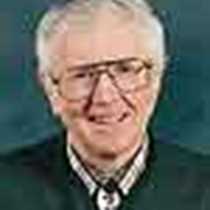Hat Rock
At Hat Rock State Park on the Oregon shore of the Columbia River, Sea Lion’s guests made their first Zodiac landing in the wake of Lewis and Clark who passed here Oct. 18, 1805.
This striking geologic feature looked to the captains like the plugged beaver hats then in fashion and the backbone of the fur trade.
From the landing beach we hiked a park trail onto a shrub-steppe grassland beside this monolith of solid black rock. These flood basalts poured from cracks rent in earth’s mantle and filled the land we are navigating by way of the Columbia and Snake rivers from the Bitteroot to the Cascade mountains.
The sculpting of Hat Rock occurred when glacial floods poured through a constriction on the Columbia called Wallula Gap, just east of Hat Rock. The water was briefly penned at 1,200 feet in height before bursting out and covering the whole of the surrounding country with deep layers of glacial gravel and sand and scouring and chiseling the volcanic outcrops. Hat Rock is striking evidence of the successive Pleistocene floods that molded this landscape we examined today on the route of Lewis and Clark.
We hiked a park trail from the landing on the steppe where Naturalist Sharon Granger identified the yellow balsam root, pink splashes of long-stemmed phlox and the last blue of wild onion whose bulbs and stems were a flavor delight for native people who called it ookow. Spring and wild flowers are brief in this arid reach of the Columbia. The shade of cottonwoods by the park’s artificial lake was welcome on this 80-degree day. Western kingbirds dueled for territory here in this otherwise treeless land.
The damming of the Columbia and the great impoundments we travel were completely altered from what the Corps of Discovery experienced. When the Corps passed here they were in want of wood for cooking and warming fires and they actually traded for wood.
Because salmon were out of season that late in the year, and there was no supply of large game, Capt. Clark wrote in his journal, “We purchased forty dogs for which we gave articles of little value, such as bells, thimbles, knitting pins, brass wire and a few beads, with all of which they appeared well satisfied.”
At Hat Rock State Park on the Oregon shore of the Columbia River, Sea Lion’s guests made their first Zodiac landing in the wake of Lewis and Clark who passed here Oct. 18, 1805.
This striking geologic feature looked to the captains like the plugged beaver hats then in fashion and the backbone of the fur trade.
From the landing beach we hiked a park trail onto a shrub-steppe grassland beside this monolith of solid black rock. These flood basalts poured from cracks rent in earth’s mantle and filled the land we are navigating by way of the Columbia and Snake rivers from the Bitteroot to the Cascade mountains.
The sculpting of Hat Rock occurred when glacial floods poured through a constriction on the Columbia called Wallula Gap, just east of Hat Rock. The water was briefly penned at 1,200 feet in height before bursting out and covering the whole of the surrounding country with deep layers of glacial gravel and sand and scouring and chiseling the volcanic outcrops. Hat Rock is striking evidence of the successive Pleistocene floods that molded this landscape we examined today on the route of Lewis and Clark.
We hiked a park trail from the landing on the steppe where Naturalist Sharon Granger identified the yellow balsam root, pink splashes of long-stemmed phlox and the last blue of wild onion whose bulbs and stems were a flavor delight for native people who called it ookow. Spring and wild flowers are brief in this arid reach of the Columbia. The shade of cottonwoods by the park’s artificial lake was welcome on this 80-degree day. Western kingbirds dueled for territory here in this otherwise treeless land.
The damming of the Columbia and the great impoundments we travel were completely altered from what the Corps of Discovery experienced. When the Corps passed here they were in want of wood for cooking and warming fires and they actually traded for wood.
Because salmon were out of season that late in the year, and there was no supply of large game, Capt. Clark wrote in his journal, “We purchased forty dogs for which we gave articles of little value, such as bells, thimbles, knitting pins, brass wire and a few beads, with all of which they appeared well satisfied.”




